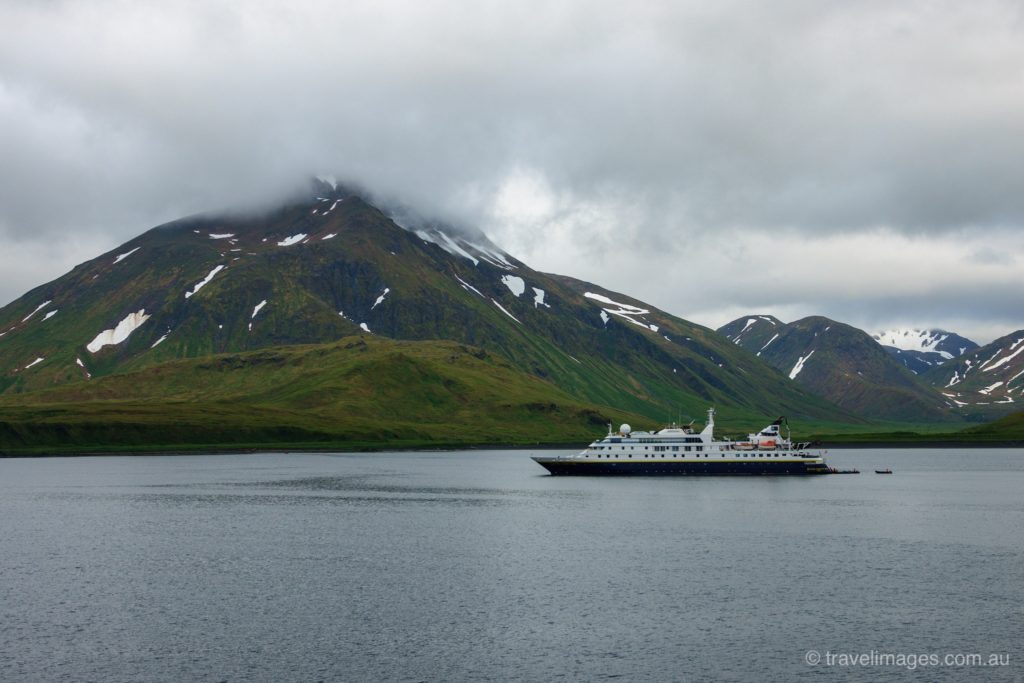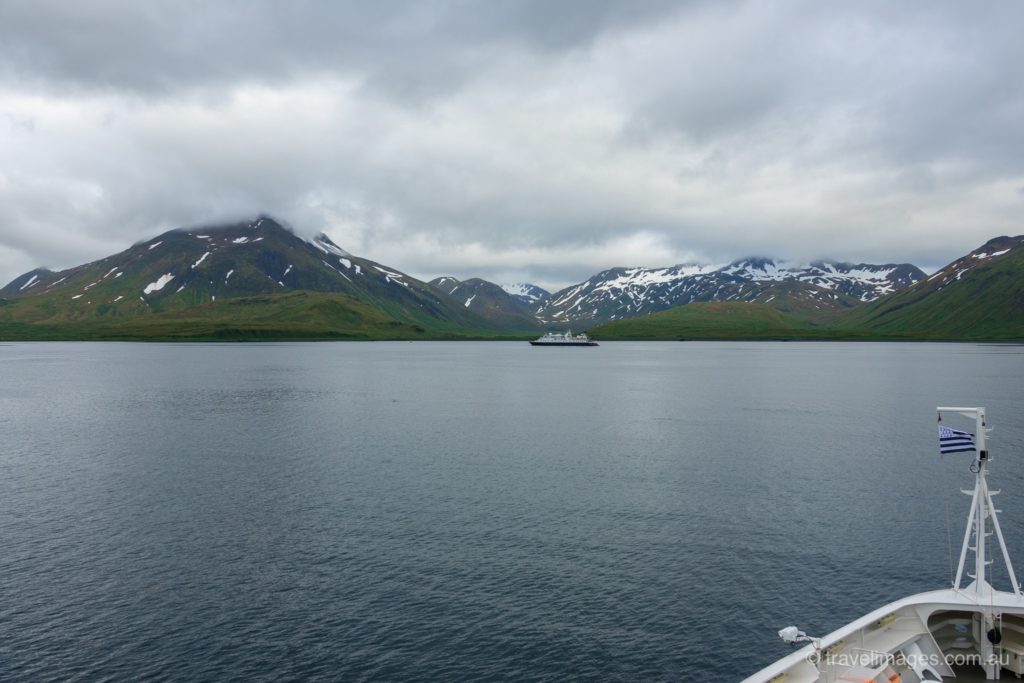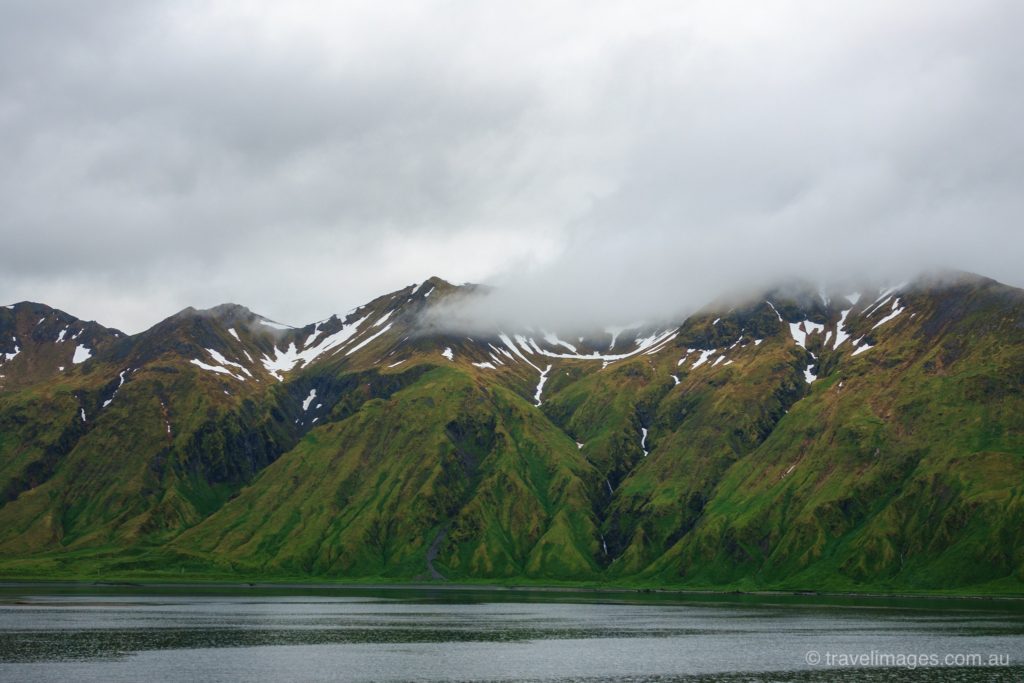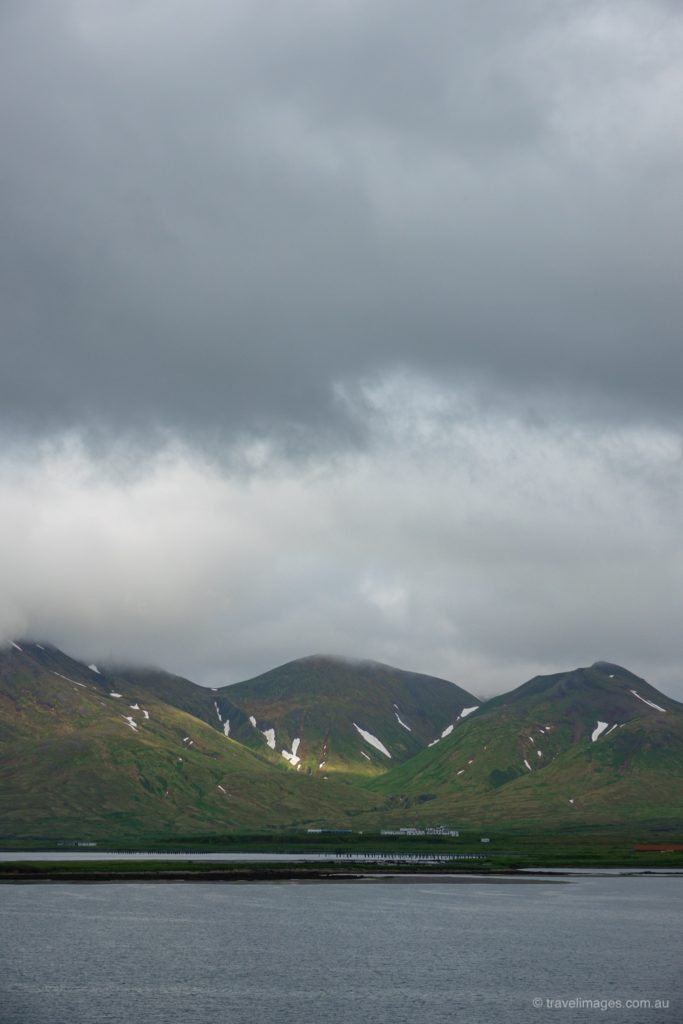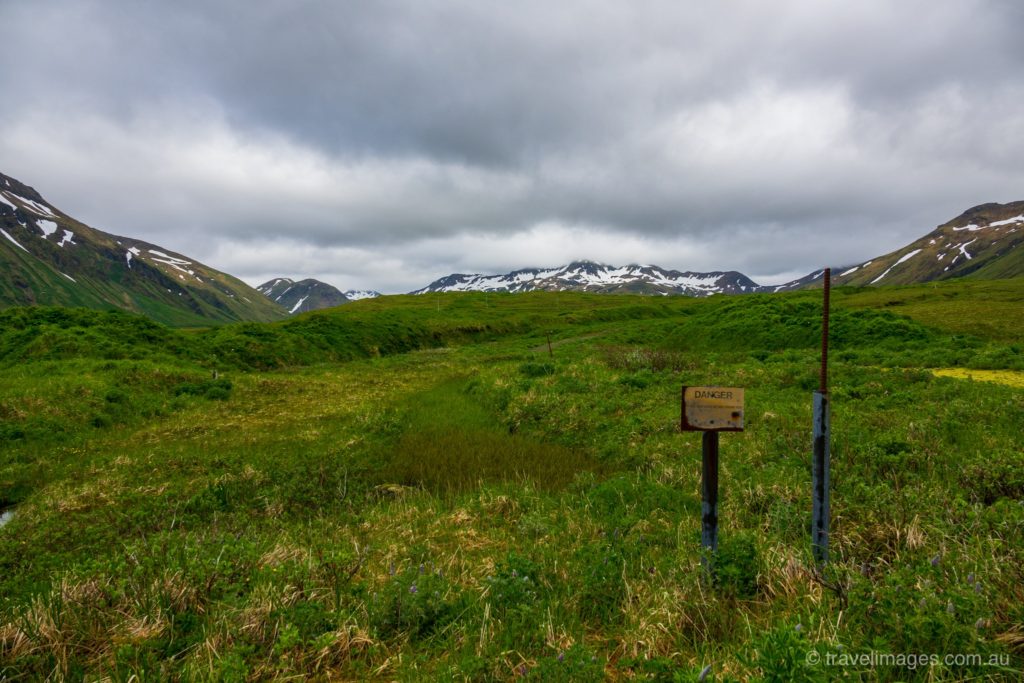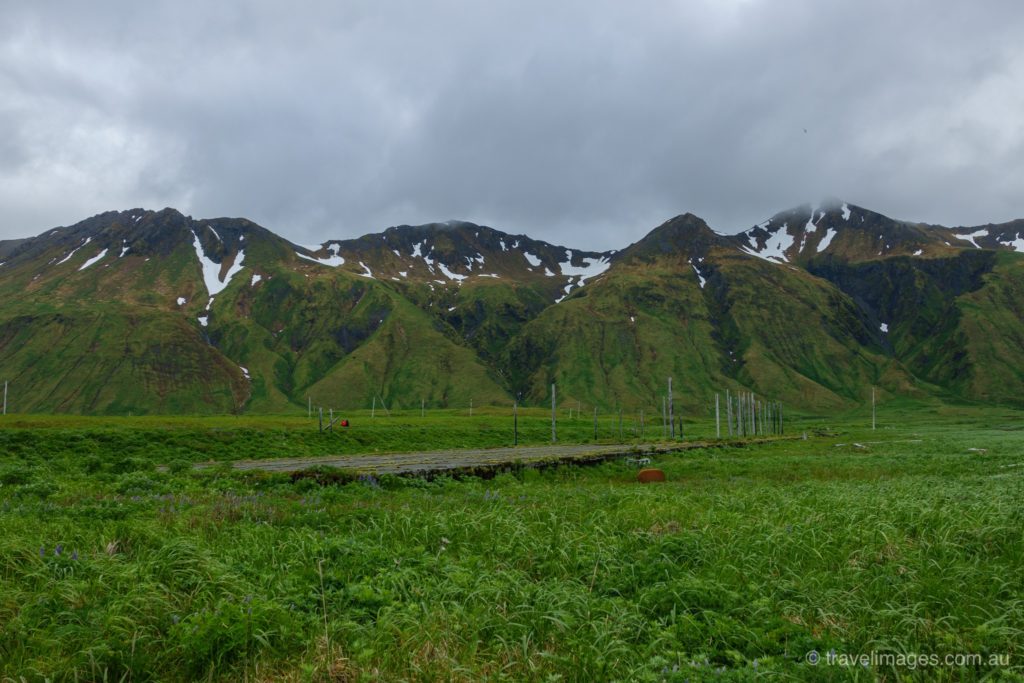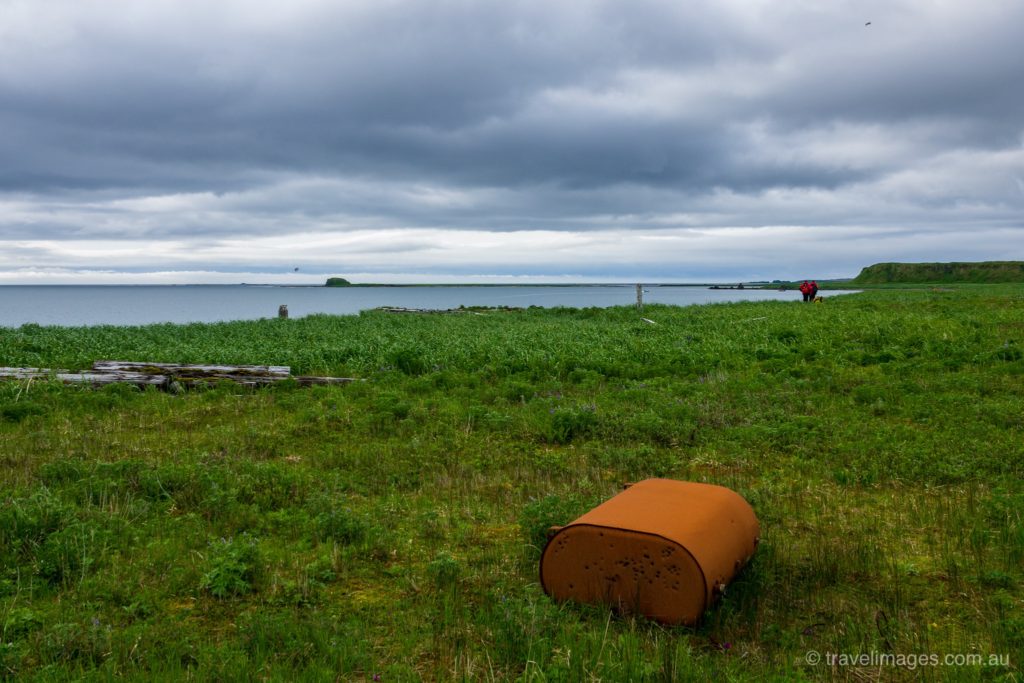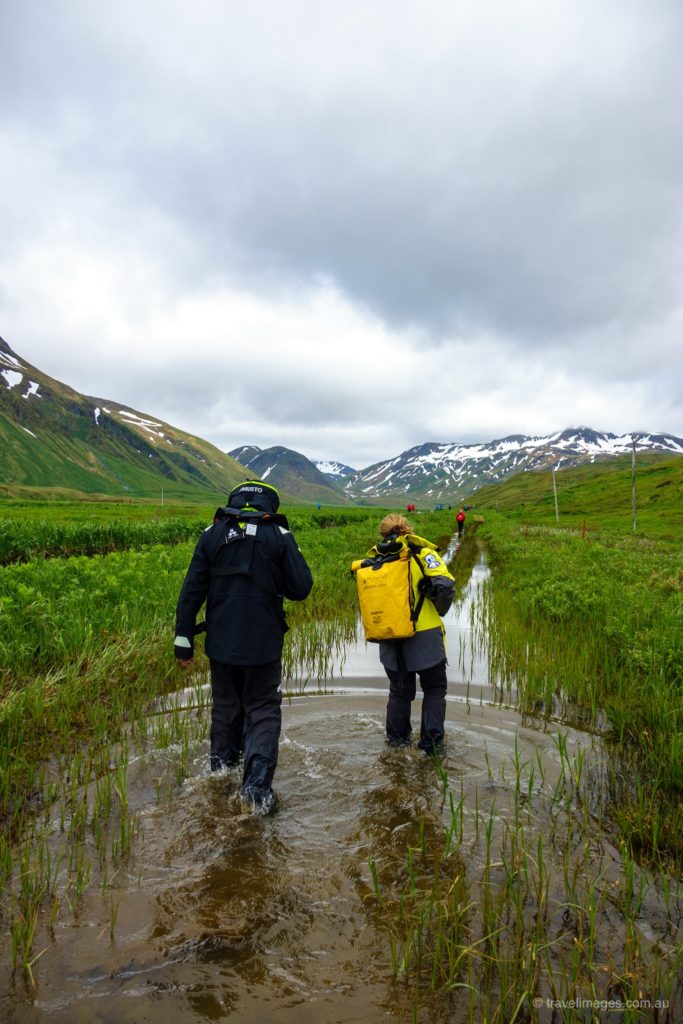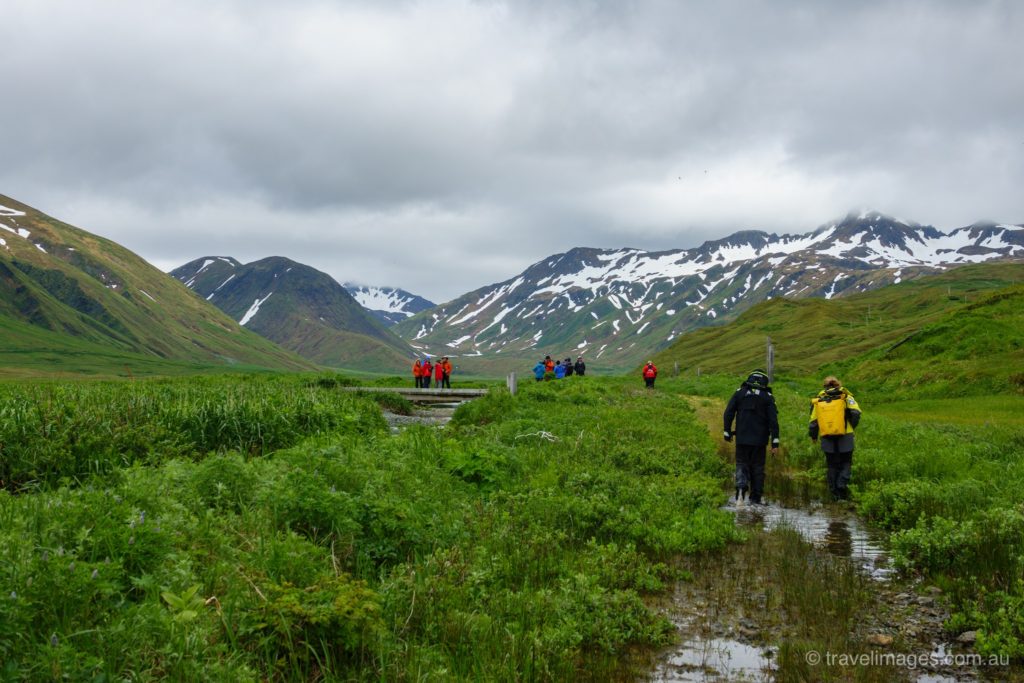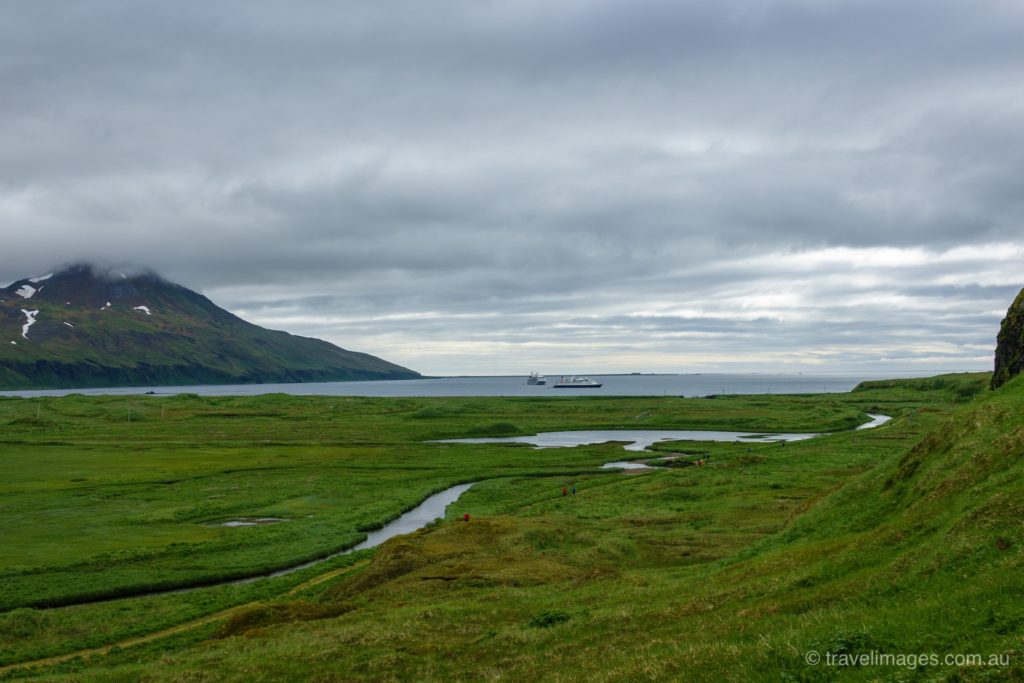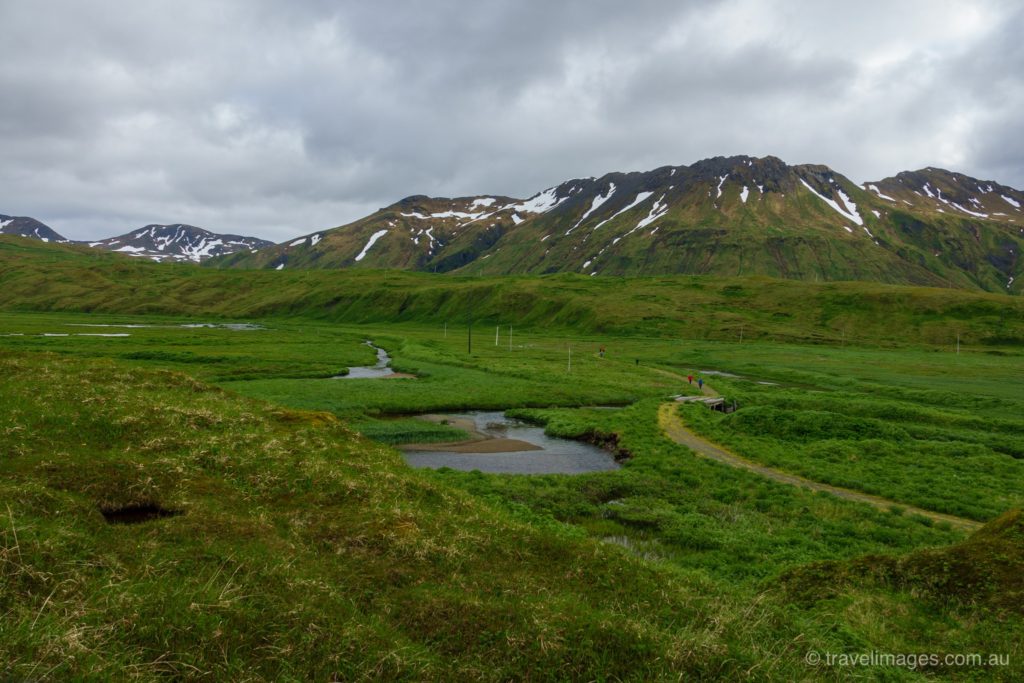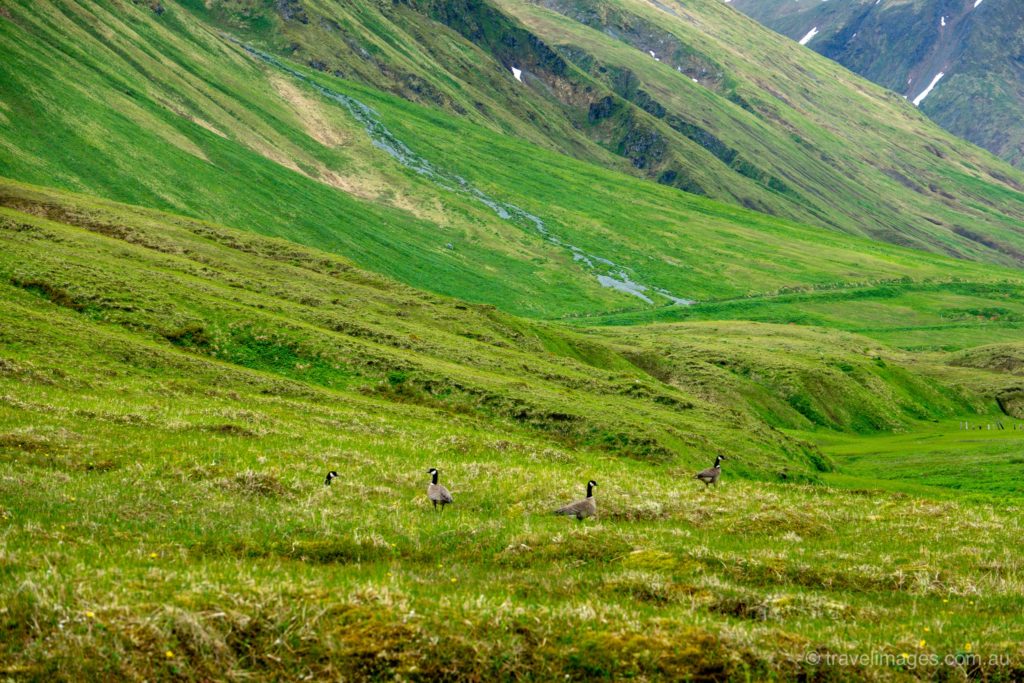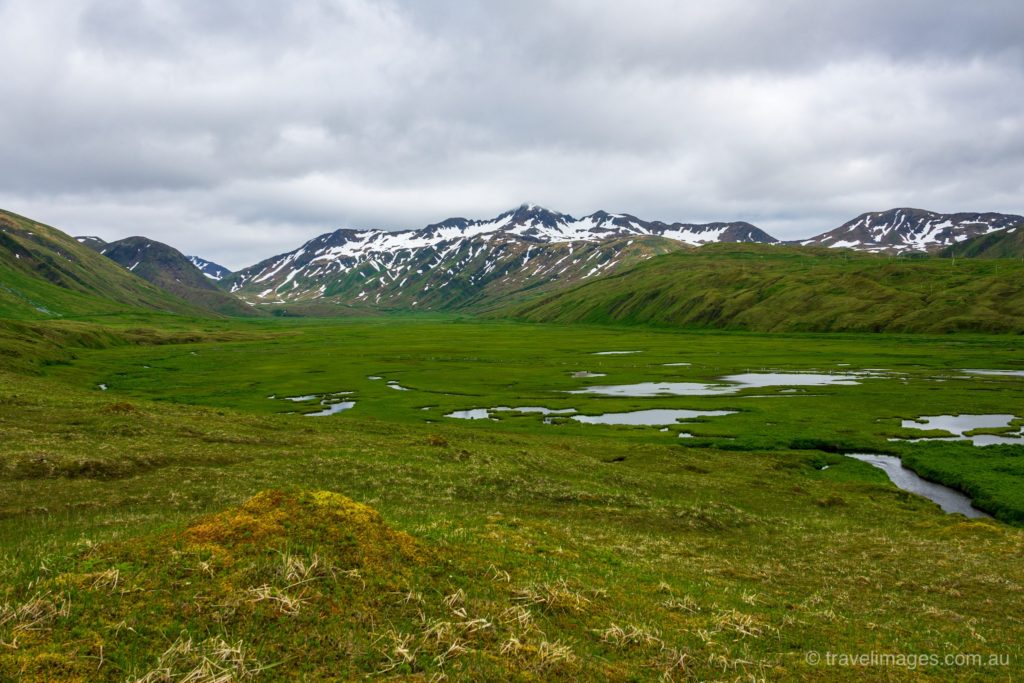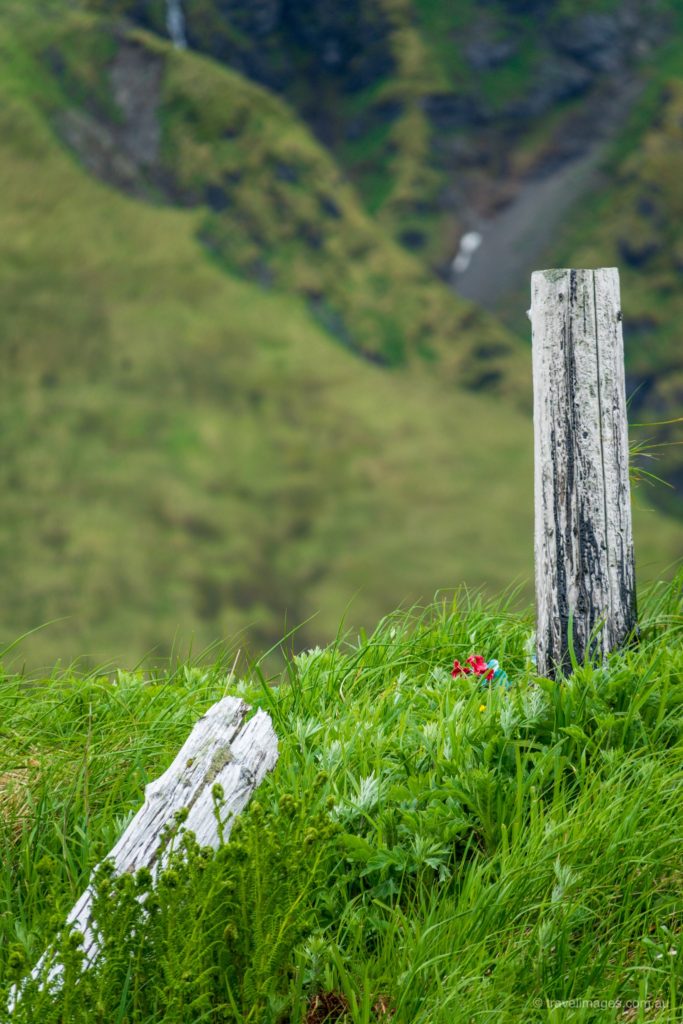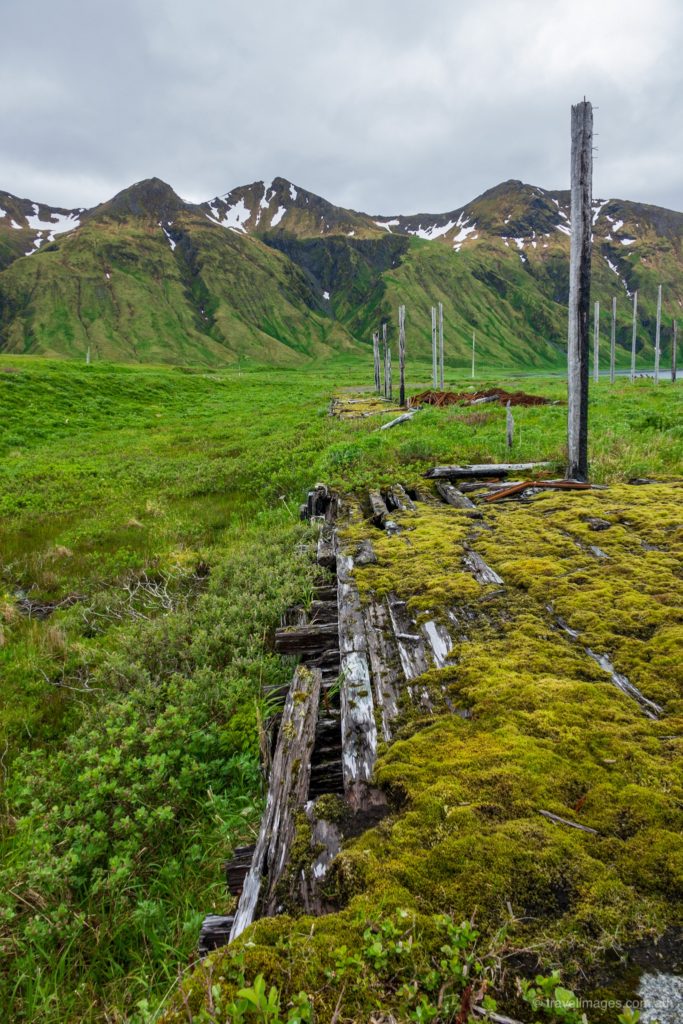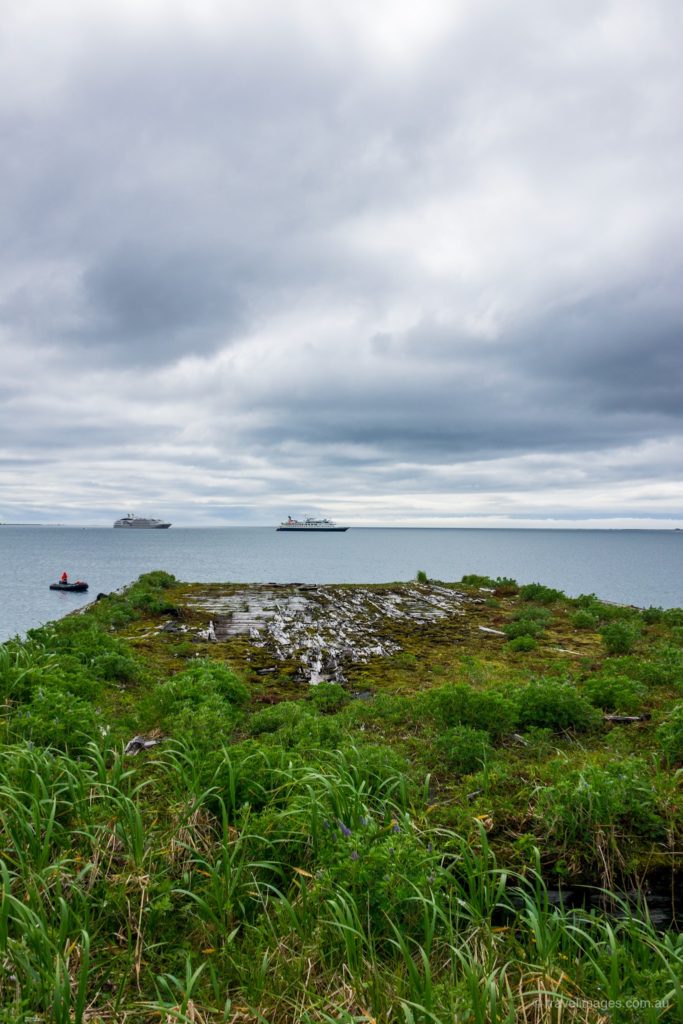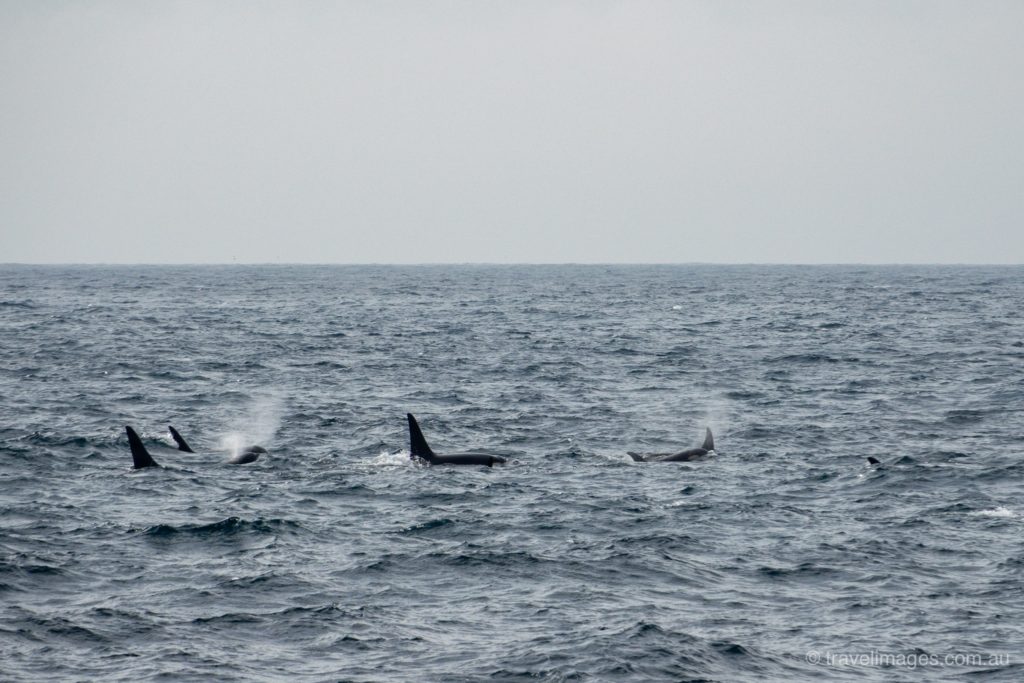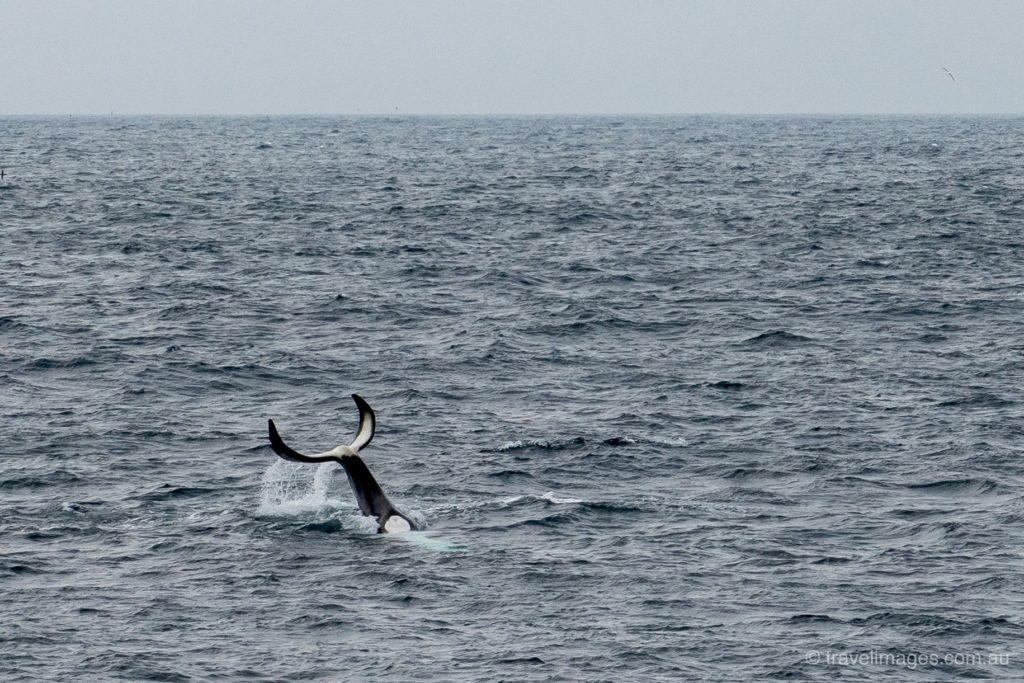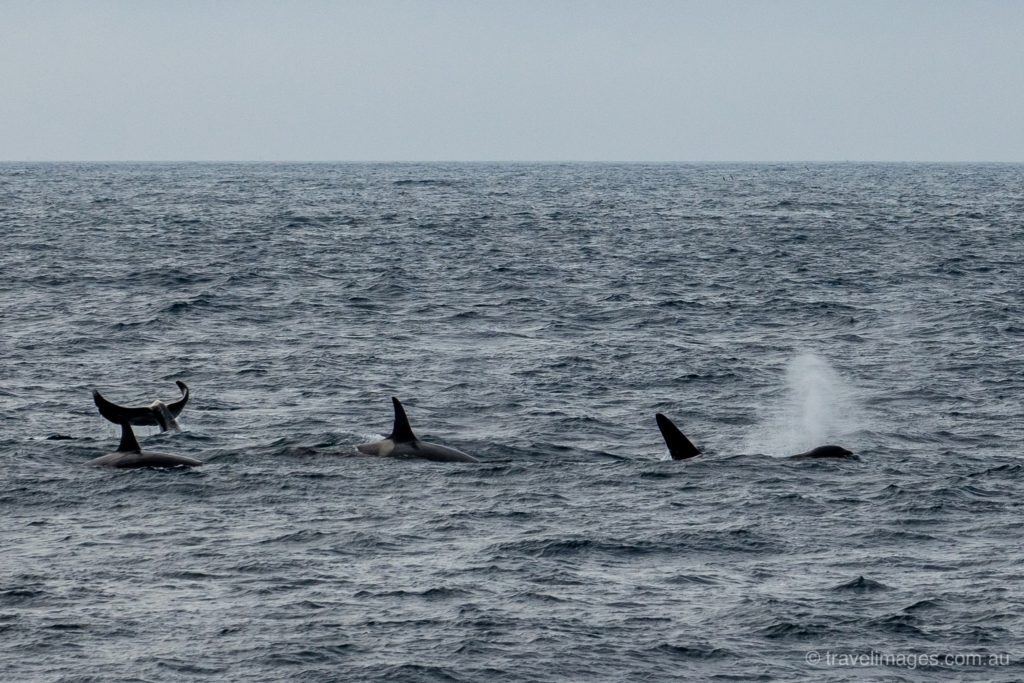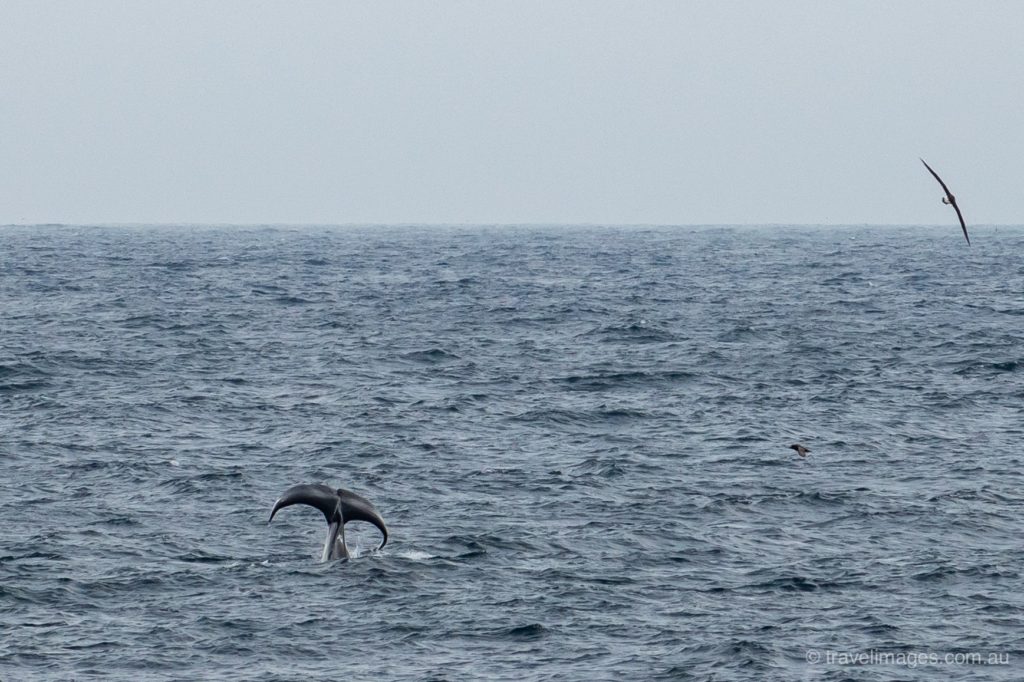This morning is the first landing of the expedition in the Aleutian Islands, at Massacre Bay, Attu Island. The scene of brief but fierce fighting in 1943 between Japanese and American forces, Attu Island is notable for its inhospitable climate, which is unrelentingly grey, windy and rainy, which is pretty usual for an island located in the well-named Furious Fifties. Attu is perfectly located for this at 53 degrees north.
This morning, it’s overcast with a forecast of 5 degrees Celsius, warming to 9 degrees in the afternoon. There are only light winds, and the occasional flash of sunlight. The name Massacre Bay derives from the Russian slaughter of the native Aleuts on Attu Island, rather than the WWII battles fought here. There were few Japanese survivors, and many American casualties with hypothermia, frostbite, and trench foot, from being poorly equipped for the inclement conditions.
We are not the only arrivals today at Massacre Bay – the National Geographic Orion is also at anchor, and seems to be a little ahead of us and our shambolic disembarkation from Le Soleal.
There is a choice of 4 activities – a 12.5 km hike on a disused road from a drop-off point earlier in the morning, which finishes in Massacre Bay; a 5.5km hike on the same road from Massacre Bay to the Peace Memorial, a walk along the beach for bird-watching or flora; or a short hike up the hill to a viewpoint across the beach and down into the valley. I’ve opted for the viewpoint climb, which is the last group off the ship and has no more than 3 participants.
The conditions on the road leading from the beach to the viewpoint demonstrate why Muck boots are mandatory – the puddles are muddy but with a good base of gravel, and the road shoulders are sponges and boggy. There is also unexploded ordinance around, which means staying on the road.
The last zodiac is meant to be at 1pm, and it is already 12pm by the time the hike starts out for the viewpoint. We only get halfway up the hill before it is time to turn around, but there is some good views up the valley of the mountain range that still has some snow cover, there is a flock of cackling geese nearby, and some tiny delicate flowers.
Dawdling back to the zodiacs, there are some interesting remnants of the WWII barracks and piers – the buildings have either collapsed or been taken down, and the piers left to rot.
The afternoon is spent searching for a pod of orcas that were seen this morning, to no avail. A Tufted Puffin was too full of fish to take off as Le Soleal went past – floating on the water it made several attempts to take off, but ended up giving up.
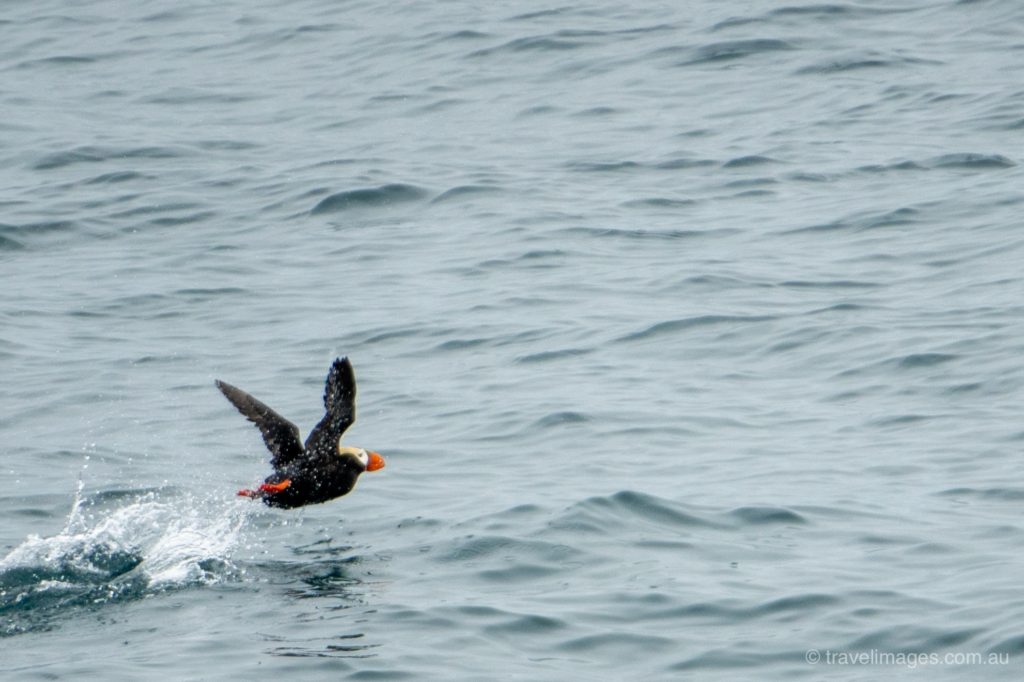
It is at the end of the evenings recap that Captain Le Rouzic announces that there is a sperm whale close to the port side of the ship, which causes a mass exodus from the briefing. A very large pod of orcas is 200-300m away from the ship, and we spend some time with them until the Captain announces that we have to be on our way again. I follow the pod to the stern of the ship as we leave them, and am rewarded with the best shots of the afternoon. The pod surfaces in the only patch of sunlight, and then another pod surfaces much closer and treats me to some tail (fluke) slapping, something I’ve never seen before with orcas.

